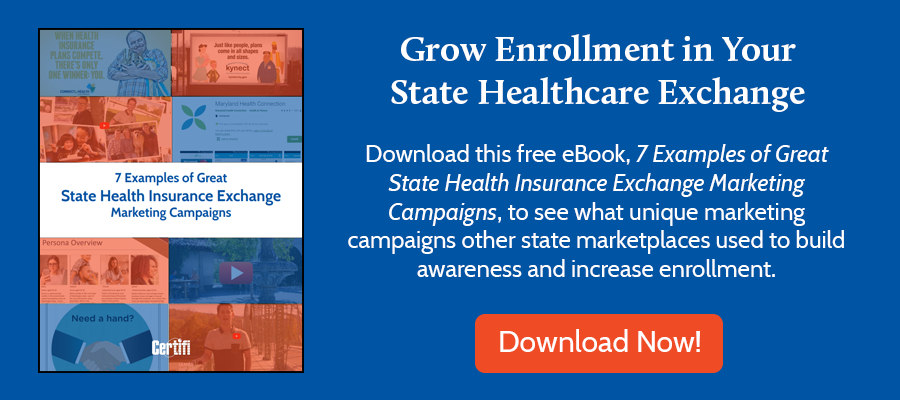Earlier this year, we discussed Essential Community Providers and the potential requirements the Notice of Benefit Payment Parameters for 2023 place on health plans. We also discussed another topic from the Notice of Benefit Payment Parameters, network adequacy in healthcare. Today, we’re going to take a look at the Notice of Benefit and Payment Parameters Proposed Rules as they relate to how Health and Human Services’ (HHS) proposed changes will impact health equity.
Here’s a look at HHS and Health Equity as a result of the 2023 Notice of Benefit and Payment Parameters Proposed Rules:
What are the Notice of Benefit and Payment Parameters Proposed Rules?
The Notice of Benefit and Payment Parameters Proposed Rules is part of the regulatory framework that the Centers for Medicare and Medicaid Services (CMS) publishes each year to operate the Affordable Care Act marketplaces. Though historically released in the fall and finalized in the spring, this year CMS released it in late December. The proposed rules would take effect in the 2023 plan year.
What is Health Equity?
As the term implies, health equity simply means that everyone has a fair opportunity to be as healthy as possible. Research has shown that many disparate factors play a role in health outcomes. Actual health care is a relatively weak determinant of health. Things like genetics, behaviors, social and environmental factors also play a role in an individual’s health. Those attributes are often referred to as social determinants of health (SDOH).
As a result, several initiatives address those SDOH to impact health outcomes and create health equity. For example, Colorado and Oregon have leveraged Medicaid waivers to create regional organizations that integrate physical, behavioral, and social services. In Oregon, these so-called Coordinated Care Organizations have coordinated with providers and Meals on Wheels to deliver meals to Medicaid beneficiaries recently discharged from a hospital. These organizations meld healthcare with SDOH to improve health outcomes.
In the 2023 Notice of Benefit and Payment Parameter Proposed Rules, it’s obvious that a priority was proposing rules that helped improve health equity. We’ve highlighted some of those proposed rules below.
What are Quality Improvement Strategy Standards (QIS) and how will they be used to impact health equity?
To be certified as a qualified health plan (QHP) and available in the health insurance marketplace, the ACA required certain quality improvement strategies. HHS requires plans that have been participating in the marketplaces for more than two years to maintain a quality improvement strategy. That strategy details how the health plan provides incentives for activities that improve health outcomes, prevent hospital readmissions, improve patient safety and reduce medical errors, promote wellness and reduce health disparities. Health plans report that strategy to the exchange.
To help improve health equity, HHS is proposing a new guideline. That guideline would require health plans to address health and health care disparities within their QIS. CMS noted that an estimated 60% of QIS submissions in 2020 addressed health disparities.
How Do the Proposed Rules Prohibit Discrimination Based on Sexual Orientation and Gender Identity?
Generally speaking, the ACA required that health plans meet certain marketing requirements and don’t design plans that effectively discourage enrollment. In 2014, those rules were further codified to protect sexual orientation and gender identity from discrimination by plans.
However, in 2020, the Trump administration stripped those protections. HHS proposes to revise those discrimination standards to again protect sexual orientation and gender identity from discrimination.
Why is HHS proposing to scale back Special Enrollment Period (SEP) Verification and how does that impact health equity?
Typically, the ACA exchanges have an open enrollment period during which individuals can shop and sign up for health insurance. Special Enrollment Periods occur outside those defined open enrollment periods. Individuals may start a SEP as a result of a life event. Examples include losing health coverage, getting married, or having or adopting a baby. Many states and the federal government’s healthcare.gov also open SEPs as a result of the COVID-19 pandemic, allowing those without insurance to enroll.
When enrollees select a plan, they typically must provide documentation. That documentation proves their eligibility for the SEP. Insurance doesn’t become effective until that documentation is approved. HHS refers to that process as pre-enrollment verification. In the 2023 Notice of Benefit and Payment Parameters Proposed Rules, HHS is proposing language that would allow states with marketplaces flexibility when conducting that pre-enrollment verification for SEPs. Additionally, the federal exchange would only continue to conduct pre-enrollment verification for those who lose minimum essential coverage.
Why? HHS indicated that about 58% of all SEP enrollments occur because of this loss of insurance coverage. They also have electronic data sources they can use to auto-verify those enrollments. Plus, they’ve found that requiring pre-enrollment SEP verifications disproportionately negatively impacts black and African American consumers who submit documentation at much lower rates than their white counterparts. Finally, younger individuals submit their documentation at lower rates than older consumers, which negatively impacts the risk pool.
Is there anything else in the 2023 Notice of Benefit and Payment Parameters related to HHS and health equity?
Yes. HHS is also seeking comments about ways to better incentivize health plans to improve health equity and address social determinants of health. Specifically, they’d like to understand what existing demographic data health plans currently have. They’d also like health plans to comment on whether they should require certain data elements related to SDOH. They also seek comments related to barriers to collecting this data. Finally, they’d like comments on whether insurers should be required to obtain the National Committee for Quality Assurance Health Equity Accreditation.
Certifi’s health insurance premium billing and payment solutions help healthcare payers improve member satisfaction while reducing administrative costs.



